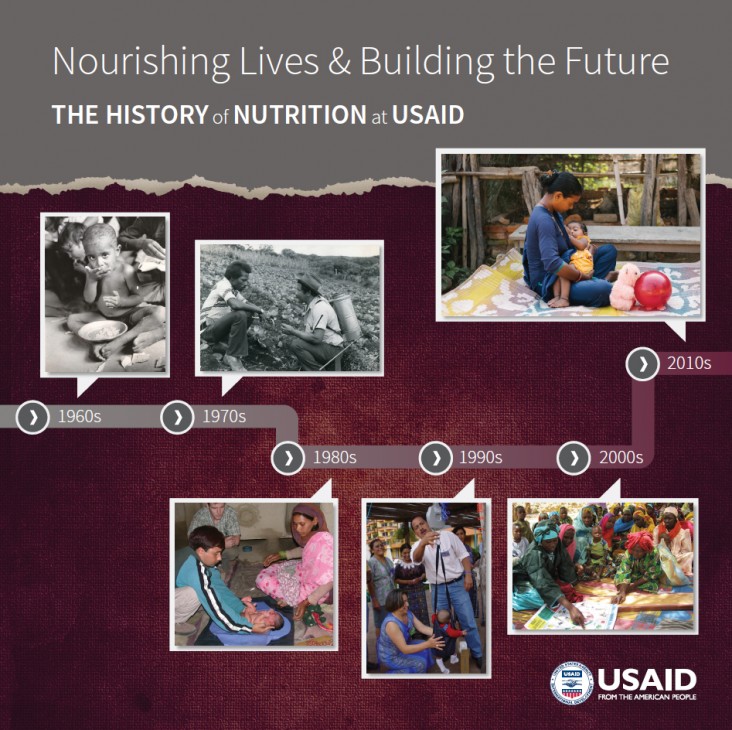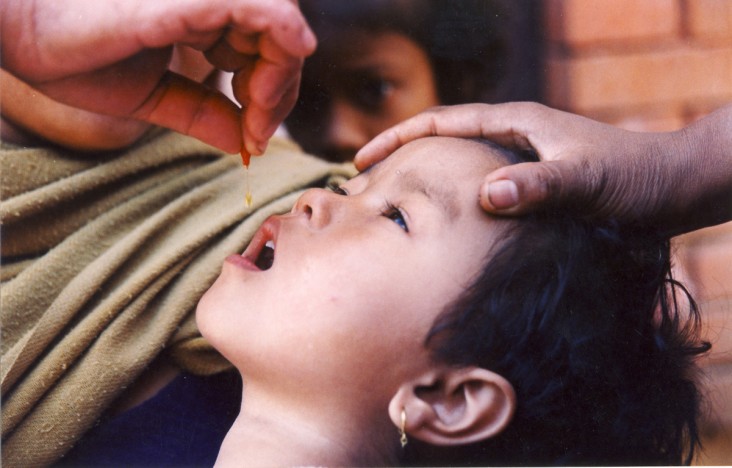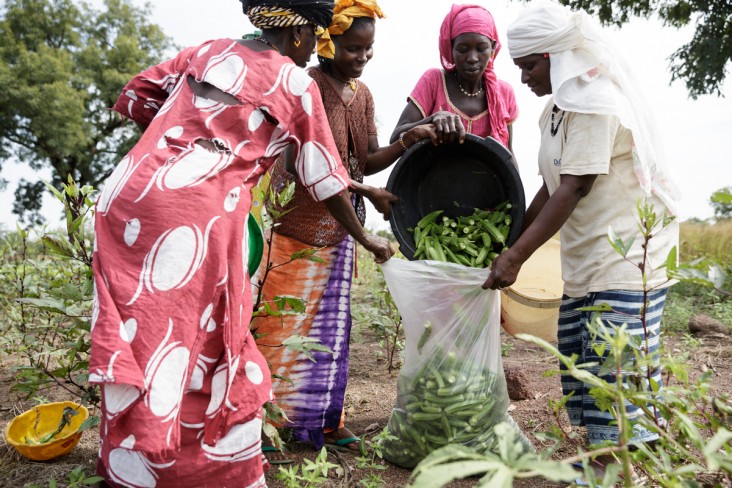- What We Do
- Agriculture and Food Security
- Democracy, Human Rights and Governance
- Economic Growth and Trade
- Education
- Environment and Global Climate Change
- Gender Equality and Women's Empowerment
- Global Health
- Humanitarian Assistance
- Transformation at USAID
- Water and Sanitation
- Working in Crises and Conflict
- U.S. Global Development Lab
Speeches Shim

For more than 50 years, USAID has worked to address the devastating effects of malnutrition, continually learning and adapting our response to ever-evolving nutrition needs and understanding. This resource describes the Agency’s investments and contributions to global progress to improve nutrition, achieved through close collaboration with implementing partners, host countries, civil society, the private sector, researchers, and other key stakeholders.
Download the full History resource
Download the Executive Summary

Chapter 1: Introduction and Overview
USAID’s nutrition programming was established in the 1960s, and the U.S government was providing food assistance even earlier through Title II, or the Food for Peace Act, which built the foundation for nutrition at USAID. In addition to detailing the origins of nutrition at USAID, this chapter also outlines the evolution of USAID’s nutrition programming and investments over time.
Chapter 2: Improving Nutrition for Women and Young Children
Improving the dietary practices and nutritional status of women and children has always been at the core of USAID’s nutrition and health programs. This chapter presents the history of USAID’s advancements to cross-cutting approaches for improving the delivery of nutrition services and enhance maternal, infant and young child nutrition, including the Agency’s community-based focus and its innovations in social and behavior change.

Chapter 3: From Vitamin A to Zinc: Addressing Micronutrient Malnutrition
Micronutrients are essential for good nutrition, proper growth and development, and overall health. As this chapter details, USAID has worked for decades to ensure individuals in need receive the nutrients they lack-- particularly vitamin A, iron, iodine, and zinc which have a direct impact on maternal and child survival.
Chapter 4: Combating the HIV Epidemic through Food and Nutrition
Poor nutrition magnifies HIV infection for affected individuals, including increasing the risk of infection, hospitalization, and mortality. Since the early 2000s, USAID has supported critical research on nutrition and HIV, developed country guidance and training materials, strengthened health systems, and provided HIV-affected families with food commodities and nutrition support to meet the nutritional needs of individuals living with HIV.

Chapter 5: Multi-sectoral Nutrition and Food Security
In the early 1970s, USAID and other global actors recognized the need for a multi-sectoral approach to reducing malnutrition— working across sectors to address the many causes and consequences of inadequate nutrition. Working closely with partners, USAID has played a key role in identifying the causes of malnutrition, addressing them through a multi-sectoral lens, and exploring how to improve nutrition through agriculture and food security efforts.
Chapter 6: Research and Measurement for Understanding and Reducing Malnutrition
Findings from nutrition research are critical to advancing the work of country governments, foundations, international organizations, partners, and the entire nutrition community. For decades, USAID has supported cutting-edge research, translated key findings into practice, and invested to improve how nutritional status is measured, examples of which are described throughout this chapter.

Spotlight: Capacity Building and Knowledge Management
Long-term support for the development of country-level human and institutional capacity is a vital component of sustaining the results of USAID’s investments beyond the end of external assistance. Capacity building and knowledge management are therefore important elements of our nutrition investments, and this spotlight section offers examples of the Agency’s support.
Chapter 7: Adapting to a Changing World
Nutrition programming will need to seek creative new ways to improve food systems, food quality, nutrition behaviors, and social norms around eating, in addition to continuing to implement and scale up established approaches to improve nutrition. To achieve this, USAID will seek out strategic and innovative ways to support partner countries in becoming more self-reliant and capable of leading their own development journeys.

Comment
Make a general inquiry or suggest an improvement.